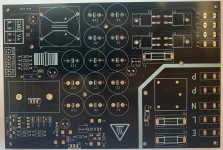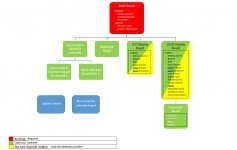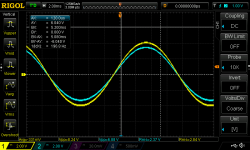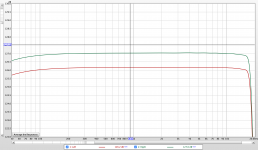to borlotti
Juergen,
those boards would be very interesting for a group buy.
But I know - a lot of time consuming work...
Greets
Dirk
Juergen,
those boards would be very interesting for a group buy.
But I know - a lot of time consuming work...
Greets
Dirk
I would say once you are there it is worth opening another thread, with rough costs and options etc.
I am sure there could be some interest 🙂
Claude
I am sure there could be some interest 🙂
Claude
muses/Preamp-Control-Unit
I think also, if I have everything together,
I can open my own thread for the PCU.

I think also, if I have everything together,
I can open my own thread for the PCU.

Last edited:
My Interest is captured and now a GB Option evolving  ,
,
I will report back to my Local HiFi Group as well, to see if any of the Korg B1 owners can be stimulated towards a GB.
 ,
, I will report back to my Local HiFi Group as well, to see if any of the Korg B1 owners can be stimulated towards a GB.
Channel Balance
What might I need to work on to improve channel balance. I did measure resistors going in so is it the JEFTS aren't matched enough or should I be happy with a dB of difference between channels?
What might I need to work on to improve channel balance. I did measure resistors going in so is it the JEFTS aren't matched enough or should I be happy with a dB of difference between channels?
Attachments
The NuTube can vary in gain a bit between its two sections. Interestingly, Pete Millet uses a small amount of adjustable NFB for gain matching in his NuClassD amplifier design. I've recently tried adding it to the B1K but initially did not like the way it affected the sound. I need some more time to see what the H2 level is in each channel when the gains are matched that way. It may be necessary to run one of the plates at a slightly different DC voltage to restore the desired H2 level.
I found one advantage to the NFB is that it reduces the amount of tube ringing, albeit at the disadvantage of removing some of that magic sound. A delicate balance, indeed.
I found one advantage to the NFB is that it reduces the amount of tube ringing, albeit at the disadvantage of removing some of that magic sound. A delicate balance, indeed.
The NuTube can vary in gain a bit between its two sections. Interestingly, Pete Millet uses a small amount of adjustable NFB for gain matching in his NuClassD amplifier design. I've recently tried adding it to the B1K but initially did not like the way it affected the sound. I need some more time to see what the H2 level is in each channel when the gains are matched that way. It may be necessary to run one of the plates at a slightly different DC voltage to restore the desired H2 level.
I found one advantage to the NFB is that it reduces the amount of tube ringing, albeit at the disadvantage of removing some of that magic sound. A delicate balance, indeed.
Thanks. This is confirming my suspicions as I’ve been reviewing schematic and probing while on boring conference calls today(the good and bad of wfh). I suppose I have a pretty good channel balance adjustment before the buffer so I can just handle it there. Unfortunately 2nd harmonic distortion is around 3% for that channel and 2% in other when driven at 2.37Vrms output. Maybe I’ll order another Nutube to see if it makes a difference. I think the JFETs are not the issue after poking around..
The bias adjustments should be able to give you matched distortion provided
that you can measure it.
that you can measure it.
The bias adjustments should be able to give you matched distortion provided
that you can measure it.
Thanks Nelson,
That was my stupidity😉. In playing around with channel balance I slightly moved pots last night to see impact on output which introduced distortion difference. I've adjusted them to ~1.5% so balance scheme should get me the rest of the way there.
I think also, if I have everything together,
I can open my own thread for the PCU.

hi Juergen,
please go ahead with the project if you can, I've just ordered the Korg and I was looking at the Tentlabs volume control, but yours is far more interesting.
The OLED display is very appealing.
Your B1K build is on par with a Mark Levinson $$$ preamp. Kudos 🙂
thanks!
Last edited:
hi
I just finished the descriptions.
Must check them again for errors and then I post everything here.
I think I'll be ready tomorrow morning.
I just finished the descriptions.
Must check them again for errors and then I post everything here.
I think I'll be ready tomorrow morning.
Looks like Alot us in love with the korg.
So romantic.
I'm leaving as it is as vanilla version and wait for papa do a headphone version with macho drive
So romantic.
I'm leaving as it is as vanilla version and wait for papa do a headphone version with macho drive
PCU Preamp - Control - Unit
it's done
It took a little longer to write the descriptions.
I hope my English is good enough for the descriptions to be understandable. 😉
If you have any questions, I will answer them, of course
first the minimal configuration:
PCU -> Preamp – Control - Unit
minimal configuration (Main board, Display OLED or LCD)
with the minimal configuration
(without the pcb for multiple input channels)
the following functions are available:
-volume
-balance
-gain (for values bigger than 0 the pcu works as an preamp)
also all standard functions like:
the real-time clock
startup volume configuration
remote control as well as controlling with rotary encoders.
and here now the complete PCU with all possibilities
Preamp - Control - Unit
the pcu is a modular expandable preamp-controller unit,
working with the muses72320 audio chip.
all functions and sectors of the pcu, as well as the digital and analog sections are separated across different pcbs, to avoid unwanted noise in the audio signal path from the digital section. the pcu can also work as a preamp itself, according to the digital selectable gain value. because of the modular design, many different expansion states and configurations are possible. going from a simple volume regulation up to full functionality including phono-preamp (mm/mc), subwoofer control unit, different input channels, oled display, smartphone as remote control over bluetooth and an ir-remote (learnable). furthermore you can select different grades of operational amplifiers for the preamp functionality, which can also be swapped at any later time. an upgrade is always possible, so that you are also able to use future hardware developments and connect them simply to the pcu. extra functionalities can also be unlocked with a new software. the power supply is handled by specially designed low noise power supplies. you have the possibility to install software updates on the processors, to always get the latest fixes and new functionalities/options.
Main-Board:
digital and analog section are completely isolated. high quality parts used in the audio signal path, to prevent signal distortion. muses72320 chip for volume, balance and gain control. muses01 operational amplifier (highest opamp configuration) with digitally configurable gain for the preamp. software can detect, if an audio signal is present (i.e. to control the standby of external devices, threshold adjustable). emi filter in the audio and power signal paths against noise in the frequency range of cellphones or wlan. high quality smb-connectors for lossless signal transmission. all extension boards share the same connector to connect them to the main-board. because of this a confusion of the connectors is not possible. a security mechanism exists, to prevent damage from wrong connected boards; no electrical damage can occur. updates can be installed with an optional usb-software-updater and included software for mac or pc. every input channel can be given a custom name, an offset of the volume and gain adjust is also available separately for each input channel, to hold every channel at the same base volume and select different preamp values. the time, how long a channel is active, is saved (i.e. to monitor the playtime of phono cartridges). when switching to another input channel, the volume gets faded down first, the input signal get galvanic isolated (mute), only now the actual channel is switched and the volume fades back up. the startup volume is adjustable (or use the previous volume from last power on). subwoofer: an extension board to control a subwoofer is available. the cutoff frequency and phase (including graphical rendering of the functions) for the subwoofer signal can be digitally adjusted. however,
no digital parts are used in the signal path.
digital section: automatic detection, which extension boards are connected and which configuration is present, without manual adjustment. this enables easy plug and play. monitoring of all critical components and extension boards to show the user a warning if incorrect wiring or defect components are present. setting current time and date, real time clock chip included. the clock will pre preserved during power down. status and error display using seven segment display and leds. monitoring of all voltages in the system, over and under voltage protection. monitoring of the current in the system. if an over or under voltage case is detected, the protection circuit will shut off every component to prevent electrical damage. polarity protection, temperature protection and monitoring. every board can be shut off separately and the digital sections can be put into a deep sleep mode to enable standby functionality. if connections for the power supply are missing, the user will get an according error message and all components and extension boards will not be started to prevent electrical damage.
now I make the descriptions for the power supplys
+/- 15 V (PCU)
24 V (Nutube)
it's done
It took a little longer to write the descriptions.
I hope my English is good enough for the descriptions to be understandable. 😉
If you have any questions, I will answer them, of course
first the minimal configuration:
PCU -> Preamp – Control - Unit
minimal configuration (Main board, Display OLED or LCD)
with the minimal configuration
(without the pcb for multiple input channels)
the following functions are available:
-volume
-balance
-gain (for values bigger than 0 the pcu works as an preamp)
also all standard functions like:
the real-time clock
startup volume configuration
remote control as well as controlling with rotary encoders.
and here now the complete PCU with all possibilities
Preamp - Control - Unit
the pcu is a modular expandable preamp-controller unit,
working with the muses72320 audio chip.
all functions and sectors of the pcu, as well as the digital and analog sections are separated across different pcbs, to avoid unwanted noise in the audio signal path from the digital section. the pcu can also work as a preamp itself, according to the digital selectable gain value. because of the modular design, many different expansion states and configurations are possible. going from a simple volume regulation up to full functionality including phono-preamp (mm/mc), subwoofer control unit, different input channels, oled display, smartphone as remote control over bluetooth and an ir-remote (learnable). furthermore you can select different grades of operational amplifiers for the preamp functionality, which can also be swapped at any later time. an upgrade is always possible, so that you are also able to use future hardware developments and connect them simply to the pcu. extra functionalities can also be unlocked with a new software. the power supply is handled by specially designed low noise power supplies. you have the possibility to install software updates on the processors, to always get the latest fixes and new functionalities/options.
Main-Board:
digital and analog section are completely isolated. high quality parts used in the audio signal path, to prevent signal distortion. muses72320 chip for volume, balance and gain control. muses01 operational amplifier (highest opamp configuration) with digitally configurable gain for the preamp. software can detect, if an audio signal is present (i.e. to control the standby of external devices, threshold adjustable). emi filter in the audio and power signal paths against noise in the frequency range of cellphones or wlan. high quality smb-connectors for lossless signal transmission. all extension boards share the same connector to connect them to the main-board. because of this a confusion of the connectors is not possible. a security mechanism exists, to prevent damage from wrong connected boards; no electrical damage can occur. updates can be installed with an optional usb-software-updater and included software for mac or pc. every input channel can be given a custom name, an offset of the volume and gain adjust is also available separately for each input channel, to hold every channel at the same base volume and select different preamp values. the time, how long a channel is active, is saved (i.e. to monitor the playtime of phono cartridges). when switching to another input channel, the volume gets faded down first, the input signal get galvanic isolated (mute), only now the actual channel is switched and the volume fades back up. the startup volume is adjustable (or use the previous volume from last power on). subwoofer: an extension board to control a subwoofer is available. the cutoff frequency and phase (including graphical rendering of the functions) for the subwoofer signal can be digitally adjusted. however,
no digital parts are used in the signal path.
digital section: automatic detection, which extension boards are connected and which configuration is present, without manual adjustment. this enables easy plug and play. monitoring of all critical components and extension boards to show the user a warning if incorrect wiring or defect components are present. setting current time and date, real time clock chip included. the clock will pre preserved during power down. status and error display using seven segment display and leds. monitoring of all voltages in the system, over and under voltage protection. monitoring of the current in the system. if an over or under voltage case is detected, the protection circuit will shut off every component to prevent electrical damage. polarity protection, temperature protection and monitoring. every board can be shut off separately and the digital sections can be put into a deep sleep mode to enable standby functionality. if connections for the power supply are missing, the user will get an according error message and all components and extension boards will not be started to prevent electrical damage.
now I make the descriptions for the power supplys
+/- 15 V (PCU)
24 V (Nutube)
Your English is perfectly understandable and this looks like an impressive project!
It seems all was already well planned even for future possibilities.
I read it through, and all was clear, bar perhaps the following:
- If no gain, are you making absolutely sure the Muses volume chip doen't activate its internal output op-amp, as that would clearly degrade the sound?
- For those who want it, do you have a function enabling the display to go completely off say after 10s of course only if no order is given, and then goes on again as soon as one touches the remote? Display on can degrade the sound and also distract even if it can be dimmed
- well, that last point is more personal, but with all these functions and nice boards and various PS regulations I am unsure what the minimum cost would be for someone wanting just a passive (no gain) volume control, not to mention the space required for all this... on the positive you seem to use the 24V from the Korg, if that can be done without polluting its sound, the better!
Thanks for all this, it looks like an impressive project, far more a modern modular pre-amp control with many convenient functions than a simple volume control.
MFG
Claude
It seems all was already well planned even for future possibilities.
I read it through, and all was clear, bar perhaps the following:
- If no gain, are you making absolutely sure the Muses volume chip doen't activate its internal output op-amp, as that would clearly degrade the sound?
- For those who want it, do you have a function enabling the display to go completely off say after 10s of course only if no order is given, and then goes on again as soon as one touches the remote? Display on can degrade the sound and also distract even if it can be dimmed
- well, that last point is more personal, but with all these functions and nice boards and various PS regulations I am unsure what the minimum cost would be for someone wanting just a passive (no gain) volume control, not to mention the space required for all this... on the positive you seem to use the 24V from the Korg, if that can be done without polluting its sound, the better!
Thanks for all this, it looks like an impressive project, far more a modern modular pre-amp control with many convenient functions than a simple volume control.
MFG
Claude
Oh, and as it is a clever pre-amp control, perhaps 2 more:
- do you have the possibility to have a source out function, that is after source selection the ability to get it out before it gets to any volume control. Kind of monitoring output, could be useful for those wanting to integrate RIAA and DAC with this preamp while being able to evaluate individualy all tweaks or compare with other units these modules stand alone
- what will you use for the source selection? I guess that needs to be a very pure selection mean and reliable...
Sorry for teh many points, but at lest you triggered interest!
Deserves defo its own thread
Claude
- do you have the possibility to have a source out function, that is after source selection the ability to get it out before it gets to any volume control. Kind of monitoring output, could be useful for those wanting to integrate RIAA and DAC with this preamp while being able to evaluate individualy all tweaks or compare with other units these modules stand alone
- what will you use for the source selection? I guess that needs to be a very pure selection mean and reliable...
Sorry for teh many points, but at lest you triggered interest!
Deserves defo its own thread
Claude
24V PSU for the Korg Nutube Preamp
here is my PSU 24V for the Korg Nutube Preamp

Power supply Model H (24V)
the “model h” power supply is a linear high performance power supply, which provides digitally supervised voltage monitoring and very low noise output. thanks to the partial shunt regulation design, the power supply can also provide clean output voltage to small loads. the toroidal transformer prevents unwanted emissions and radiation is minimized to suppress noise in sensitive analog circuits. the output voltage can be precisely adjusted with a potentiometer.
Features
-high security: primary and secondary side are fused
-suppressing house power line noise (from microwaves, motors, …) by using a special mains filter
-protection against overvoltage coming from mains
-different output voltages selectable by switching resistors. fine tuning using potentiometers
-big capacitance (ca. 24mf) to stabilize short power pulses from the load
-protection against big capacitive loads
-digital voltage monitoring (adjustable). monitoring over- and undervoltage for output
-overvoltage, overpower and over temperature protection
-exact output voltage independent from the connected load by using a specialized partial shunt regulation. therefore the power supply doesn’t need a minimum load to be stable and can power very small loads with low noise.
-ultra fast diodes to prevent ringing
-different filters, including inductive ones, to prevent low and high frequency noise
-specialized filters to suppress 50hz mains noise
the default version of the power supply is adjusted to 28v. the maximum current per rail is 5a. peak load up to 5.1a. for different voltages and/or higher currents, feel free to contact me.
Transformer
the toroidal transformer must be configured as follows: primary 1x 230v, secondary 2x 27v, 230va (please adjust power and voltage according to desired output voltage and power of the power supply; you can get information about this by contacting us). the secondary windings will be connected in serial on the power supply pcb. please pay attention to the polarity of the windings!
here is my PSU 24V for the Korg Nutube Preamp

Power supply Model H (24V)
the “model h” power supply is a linear high performance power supply, which provides digitally supervised voltage monitoring and very low noise output. thanks to the partial shunt regulation design, the power supply can also provide clean output voltage to small loads. the toroidal transformer prevents unwanted emissions and radiation is minimized to suppress noise in sensitive analog circuits. the output voltage can be precisely adjusted with a potentiometer.
Features
-high security: primary and secondary side are fused
-suppressing house power line noise (from microwaves, motors, …) by using a special mains filter
-protection against overvoltage coming from mains
-different output voltages selectable by switching resistors. fine tuning using potentiometers
-big capacitance (ca. 24mf) to stabilize short power pulses from the load
-protection against big capacitive loads
-digital voltage monitoring (adjustable). monitoring over- and undervoltage for output
-overvoltage, overpower and over temperature protection
-exact output voltage independent from the connected load by using a specialized partial shunt regulation. therefore the power supply doesn’t need a minimum load to be stable and can power very small loads with low noise.
-ultra fast diodes to prevent ringing
-different filters, including inductive ones, to prevent low and high frequency noise
-specialized filters to suppress 50hz mains noise
the default version of the power supply is adjusted to 28v. the maximum current per rail is 5a. peak load up to 5.1a. for different voltages and/or higher currents, feel free to contact me.
Transformer
the toroidal transformer must be configured as follows: primary 1x 230v, secondary 2x 27v, 230va (please adjust power and voltage according to desired output voltage and power of the power supply; you can get information about this by contacting us). the secondary windings will be connected in serial on the power supply pcb. please pay attention to the polarity of the windings!
- Home
- Amplifiers
- Pass Labs
- B1 with Korg Triode



